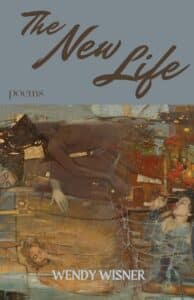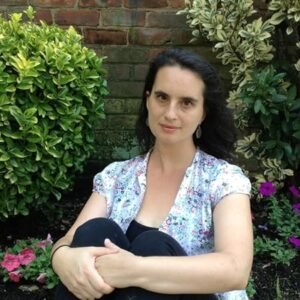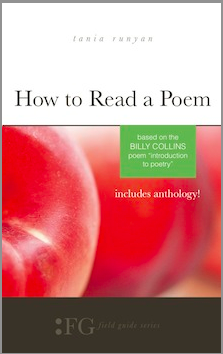Wendy Wisner writes about death, and life
As a child, I knew my father’s three sisters, two older and one younger. All three lived with their families in what I considered a magical place — Shreveport, La. A visit there always involved a six-hour drive (325 miles) from my hometown of New Orleans. Yeah, I know; I was born and raised in New Orleans, but I thought of Shreveport as magical?
It was magical because it was where my grandmother lived, the one I spent a week with every summer from age 8 to 13. I flew on an airplane by myself (“unaccompanied minor”) for the visits. I’d feed the sheep in her backyard. I’d spend time exploring my deceased grandfather’s workshop next to the garage. We’d tool around town in her 1940 Ford sedan, which was forever breaking down and requiring a tow.
One visit, I asked her about an aunt I’d never met. My father would speak fondly and rather emotionally about Elouise, “my sister who died.” She’d died as a child; The way he talked about her, I assumed she was a young teen and younger than he was. My grandmother answered my question with tears in her eyes. “She was a lovely child,” she said. “She caught a fever, and she died.” She became too choked up to say more.
Decades later, I learned that Elouise was born three years before my father and died the year before he was born. She was two years old at the time of her death. He never knew her. And yet her death affected him profoundly.
We see the statistics on infant and child mortality before the advent of antibiotics and other medical advances, and we nod in understanding. But when the statistic is your own family, and it affects both those who experience it and those who come after it happened, you know that it is something more than a statistic.
In the 38 poems of her new collection The New Life, poet and writer Wendy Wisner speaks to that difference between statistic and family reality. She knows from her own family history that children can die; it happened to her grandmother’s sister on the boat when the family immigrated to America. It happened to her grandmother, who lost a child during childbirth in the hospital. To a doctor or researcher, such events are statistics. To the people who experience it, it’s a tragedy that stays with them the rest of their lives.
But against that reality of death, Wisner also celebrates life, marriage, and parenting. She finds much to celebrate, far more than to mourn. It’s the new life of spring, the seasonal planting of dahlias, watching a husband through the window, the physical experience of a newborn placed on your body after you feel like your body’s been torn apart in childbirth. Or telling a story to help your sister fall asleep and a father developing photographs in a darkroom.
You can even find it in those moments of tragedy, in the curt words of the doctor who’s been there, done that, and knows the statistics.
Have Another

over mine, I think I should Google
what happens
when you don’t talk about stillbirth.
I need to find out what they did
with the bodies of the babies
in 1943, when my grandmother
lay in the hospital
screaming—
Have another
was the doctor’s only advice,
and whisked her home.
Seventy years later, almost
summer, the porch door
creaks open and my son
tramps out of the house
without a word. I scream
and run, searching
the tall grass and dandelions
for his body. My screams
hiss across the chain-link fence.
Death is not the opposite of life; death is a part of life. Very much a part of life. It’s a kind of leaving, more extreme but not unlike, as Wisner describes in the poem “Listen,” a child growing up and leaving for school each morning, or your husband leaving for work, or your father leaving the family for another life, or fall leaving and transforming itself into “wild chinks of snow” covering the sidewalk.

Wendy Wisner
Wisner, a poet, writer, and journalist, has previously published two poetry collections, Epicenter and Morph and Bloom. Her poems have been published in several literary magazines, including Prairie Schooner, Spoon River Review, Passages North, Tar River Poetry, Nashville Review, and Minnesota Review. She received a B.A. degree in English and an MFA degree in creative writing, both from Hunter College, where she also taught for four years. She’s also published numerous articles in newspapers, magazines, and web sites, focusing on wellness, women’s health, infant and child health, mental health, and parenting. She lives in New York.
In The New Life, Wisner reminds us to remember that death is part of life. It doesn’t cancel life in our minds, but it makes life more vivid and urgent. Death heightens our awareness that there is much to celebrate and much to be grateful for.
Photo by Gabriel Caparo, Creative Commons, via Flickr. Post by Glynn Young.
How to Read a Poem uses images like the mouse, the hive, the switch (from the Billy Collins poem)—to guide readers into new ways of understanding poems. Anthology included.
“I require all our incoming poetry students—in the MFA I direct—to buy and read this book.”
—Jeanetta Calhoun Mish
- Poets and Poems: Hedy Habra and “Under Brushstrokes” - December 2, 2025
- Happy Thanksgiving, from Tweetspeak Poetry (and Henry Wadsworth Longfellow) - November 27, 2025
- Finding Poetry in an Anselm Kiefer Art Exhibition - November 25, 2025


L.L. Barkat says
Thanks for this great review, Glynn. I really loved Wendy’s poems in this collection. She’s quite the poet!
Wendy Wisner says
Thank you so much. And huge thanks to Glynn for this thoughtful review.